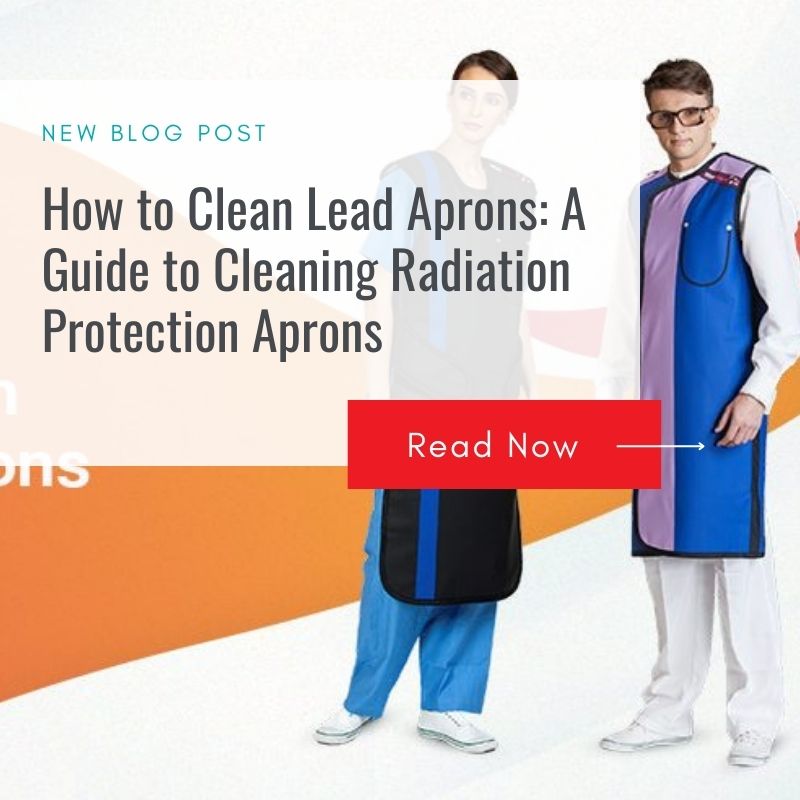
Lead aprons are essential for protecting medical professionals from harmful radiation exposure during diagnostic or interventional procedures. However, lead aprons can also accumulate dirt, bacteria, and blood stains over time, which can compromise their effectiveness and hygiene. Therefore, it is important to clean and maintain lead aprons regularly and properly. In this article, we will explain how to clean lead aprons and where to dispose of them when they are no longer usable. We will also refer to a blog post by Trivitron Healthcare, a leading provider of radiation protection products, that highlights the importance of clean radiation protection aprons.
Why is it important to clean lead aprons?
Cleaning lead aprons is not only a matter of aesthetics, but also of safety and quality. Dirty lead aprons can:
– Reduce the shielding performance of the apron, exposing the wearer to more radiation than necessary.
– Harbor harmful microorganisms that can cause infections or cross-contamination.
– Degrade the fabric and the inner material of the apron, making it more prone to tears, cracks, or holes.
– Cause unpleasant odors and discomfort for the wearer.
According to the blog post by Trivitron Healthcare, radiation protection aprons should be cleaned after every use or at least once a week. However, the cleaning process should be done carefully and gently, as harsh chemicals or methods can damage the apron.
How to clean lead aprons?
The following steps can help you clean your lead aprons effectively and safely:
– Use a soft cloth or sponge dampened with warm water and mild soap or detergent. Do not use bleach, alcohol, or other solvents that can corrode the fabric or the inner material of the apron.
– Wipe the surface of the apron gently, paying attention to any stains or spots. Do not scrub or rub the apron too hard, as this can cause abrasion or deformation.
– Rinse the cloth or sponge frequently and change the water as needed. Do not immerse the apron in water or use a washing machine or dryer, as this can cause delamination or shrinkage of the apron.
– Dry the apron with a clean towel or air dry it in a well-ventilated area. Do not expose the apron to direct sunlight or heat sources, as this can cause fading or cracking of the apron.
– Store the apron on a flat surface or hang it on a padded hanger. Do not fold, crease, or stack the apron, as this can cause permanent damage to the apron.
Where to dispose of lead aprons?
Lead aprons have a limited lifespan and should be replaced when they show signs of wear and tear, such as:
– Visible holes, cracks, or tears in the fabric or the inner material of the apron.
– Loss of flexibility or stiffness of the apron.
– Discoloration or fading of the fabric or the inner material of the apron.
– Reduced weight or thickness of the apron.
To determine if your lead apron needs to be replaced, you can perform a visual inspection or use an X-ray machine to check for any defects in the shielding performance of the apron.
When you decide to dispose of your old lead apron, you should follow the local regulations and guidelines for hazardous waste disposal. Lead is a toxic metal that can contaminate the environment and pose health risks for humans and animals. Therefore, you should not throw away your lead apron in regular trash bins or landfills. Instead, you should contact a licensed waste management company that can collect and recycle your lead apron safely and responsibly.
Conclusion
Lead aprons are vital for protecting medical professionals from radiation exposure during their work. However, they also require proper cleaning and maintenance to ensure their effectiveness and hygiene. By following the tips in this article and referring to the blog post by Trivitron Healthcare, you can keep your lead aprons clean and functional for a long time. You can also learn how and when to dispose of your lead aprons in an environmentally friendly way.